In the ever-evolving landscape of photography, 360 cameras have carved out a unique niche allowing creators to capture immersive experiences with a simple click. For iPhone users, integrating a 360 camera can enhance your device’s capabilities, letting you record every angle of your surroundings in one shot. These cameras come with dual lenses that stitch together the footage, creating a spherical view of the world that’s ready for virtual reality or sharing on social media platforms that support 360-degree content.
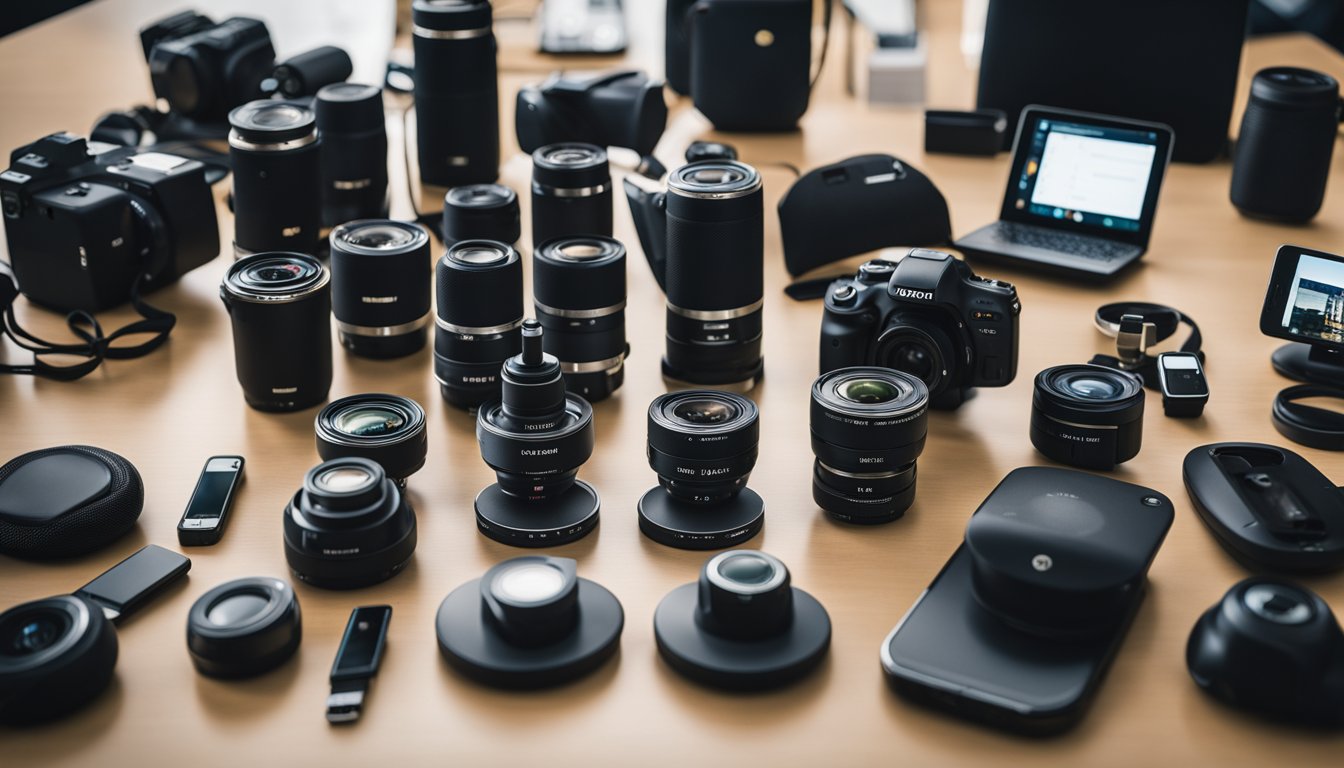
Choosing the right 360 camera for your iPhone involves considering several factors, such as ease of connectivity, image quality, and additional features that can set one camera apart from another. It’s not just about the seamless pairing with your device but also about how the camera handles various lighting conditions, the resolution of images and videos it produces, and the creative possibilities it unlocks. With the various options available in the market, from attachments that turn your iPhone into a sophisticated 360 camera to standalone units that communicate with your phone wirelessly, picking the best fit for your needs is crucial.
Key Takeaways
- 360 cameras offer a unique way to capture all-encompassing images and videos with your iPhone.
- Essential considerations for purchasing a 360 camera include compatibility, image quality, and user-friendly features.
- Selecting the appropriate camera depends on your specific requirements and creative ambitions.
What Are 360 Cameras and How Do They Work?
360 cameras, also known as 360-degree cameras or spherical cameras, are innovative devices designed to capture a full 360° view of their surroundings. Here’s a look at what makes these cameras unique:
- Dual Lenses: Most 360 cameras boast two ultra-wide-angle lenses that cover 180 degrees each. This allows them to record everything around them simultaneously.
- Image Stitching: After capturing the footage, the camera stitches the two separate images together to create one seamless spherical video.
By using a 360 VR camera, you can create immersive content that lets viewers look in any direction.
Capturing Spherical Video
To record in 360 degrees, follow these steps:
- Position the camera: Place your camera in the center of the action, much like you are the director in the middle of your own 360-degree stage.
- Shoot: Your camera will record two fish-eye, panoramic views at the same time.
- Combine: Through either in-camera software or specialized editing software, your separate recordings are merged into one spherical video, which looks unified and continuous.
Viewing 360 Video
To experience your creation:

- 360-degree video can be watched on dedicated platforms or specialized VR headsets. Simply drag to look around, or move your iPhone to explore the video in real-time, creating a truly immersive experience.
Remember, while traditional video confines you to the frame, a 360-degree camera removes all boundaries, putting you at the center of your photographic universe.
Choosing the Best 360 Cameras for iPhone
When you’re in the market for a 360 camera to pair with your iPhone, compatibility should be your first consideration. iOS is known for its seamless integration with accessories, but it’s crucial to ensure the camera you pick supports your phone. Here’s a quick guide:
- Insta360 Nano S: This model is praised for its iPhone compatibility, clipping directly to your device and offering impressive features.
- Insta360 ONE X2: Beyond just iOS support, it provides stunning image quality and robust editing tools through its app.
- Insta360 ONE RS: A versatile choice with interchangeable lens capability, enhancing your 360-degree video experience.
For those looking for wide compatibility, the following are known to work well with a range of smartphones:
- Samsung Gear 360: While a product from an Android-focused manufacturer, the latest models may offer some support for iPhone users.
- GoPro Max: GoPro’s contender in the 360 arena boasts strong iPhone support and is known for its rugged build and high-quality capture.
Here’s a brief comparison of key aspects:
| Camera Model | Photo Resolution | Video Resolution | Special Features |
|---|---|---|---|
| Insta360 Nano S | High | High | Direct iPhone clip-on |
| Insta360 ONE X2 | Very High | 5.7K | Waterproof, Steady Cam |
| GoPro Max | High | 5.6K | Max HyperSmooth, Rugged |
Consider the Rylo 360 if you’re beginning your 360-video journey, known for its user-friendly interface and quality video under favorable conditions. Meanwhile, the Vuze XR offers a different approach with its ability to shoot not just in 360 but also in 3D, offering versatility in content creation.
Remember to check the specific phone support for each model as it varies and updates over time. Your best bet is to focus on the latest offerings to ensure smoother integration and a more enjoyable experience capturing everything around you. Happy shooting!
Compatibility and Connectivity
« Pano View 360 Camera Review: Capturing Life in Every Angle
Ricoh Theta V 360 Camera Review: An Immersive Experience in Every Shot »
When picking the best 360-degree camera for your iPhone, you want seamless integration with your device and easy ways to share to your favorite platforms. Let’s dive into how the top cameras on the market excel in working with iOS and their complementary apps.
iOS Integration
Your chosen 360-degree camera should effortlessly connect with your iPhone. Look for cameras that offer direct compatibility with iOS, meaning you can plug the camera into your iPhone’s Lightning port or connect wirelessly without a hitch. This ensures a smooth experience and immediate access to your panoramic shots.
Wi-Fi and Bluetooth Support
Wireless connectivity is key for a frictionless connection between your camera and iPhone. Cameras with both Wi-Fi and Bluetooth capabilities let you control the device remotely from your phone and easily transfer files. A camera like the Insta360 Nano S, which supports these features, can simplify the process of getting your 360-degree videos and photos onto your device without cumbersome wires.
Software and App Ecosystem
A stellar 360-degree camera is backed by powerful software. Your camera should come with user-friendly app support that not only allows you to manipulate your images and videos easily but also to share them to social platforms directly from your iPhone. Many cameras also offer a desktop software option for both Mac and PC, providing additional editing capabilities. Android app availability is a plus if you plan to switch devices or share with friends who use Android.
Camera Specifications
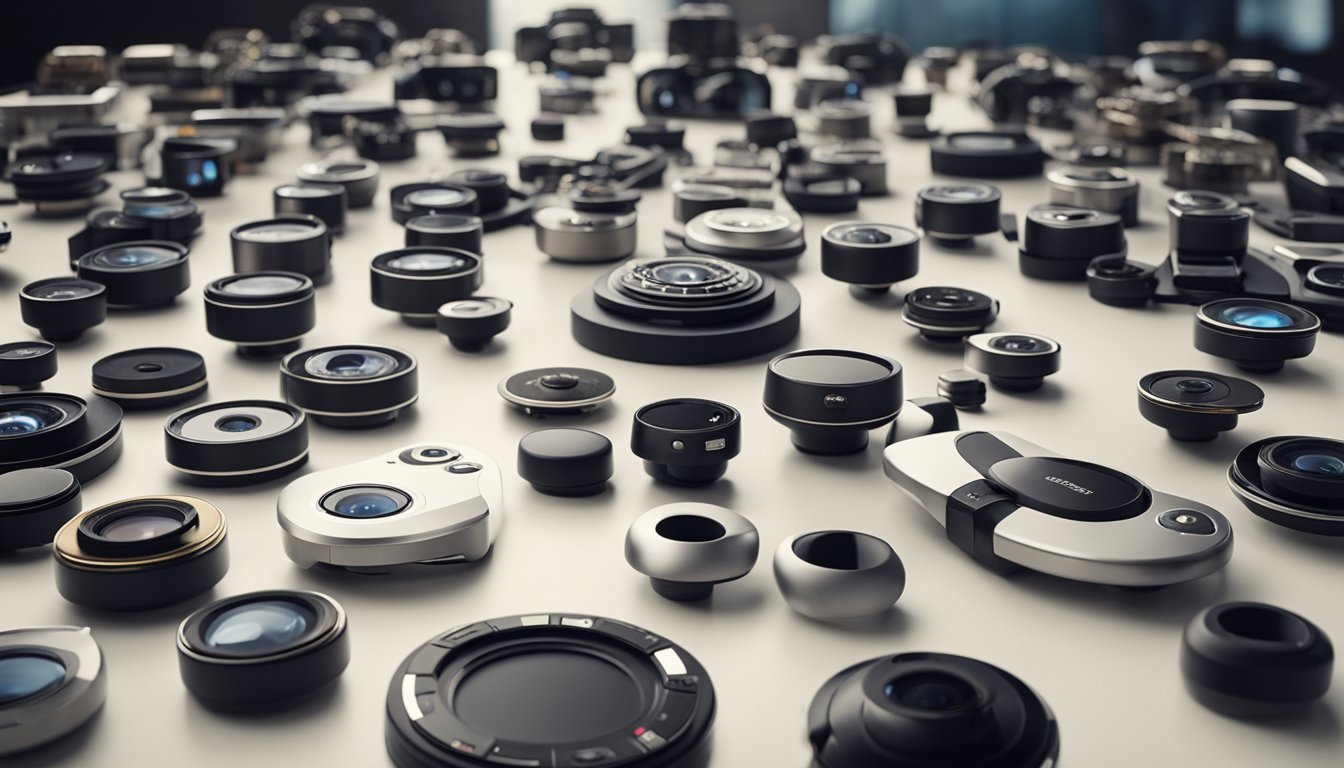
When choosing a 360 camera for your iPhone, you want to ensure you’re getting the best image and video quality, as well as sound recording capabilities for a truly immersive experience.
Resolution and Image Quality
For stunning clarity and detail, you’ll want to look for a camera with a high photo resolution. The Insta360 cameras typically offer up to 21 megapixels (MP) for photos, ensuring your images are sharp. In terms of video resolution, 4K is a good standard to aim for, with some cameras like the GoPro Max providing video resolutions up to 5.6K, bringing exceptional detail to your 360-degree footage.
Frame Rate
Your camera’s frame rate is crucial for smooth video playback. A rate of 30 frames per second (fps) is common and gives your video a natural look with minimal motion blur. Some cameras, such as the Rylo 360, support even higher frame rates, which can be advantageous for creating slow-motion effects without compromising video smoothness.
Audio and Microphone Features
Quality audio is key for an engaging 360 experience. Multiple built-in microphones can capture spatial audio, which aligns with the direction of the video, immersing you in the environment. Look for cameras that support spatial audio recording to elevate your 360 videos, with some providing advanced options for noise reduction and sound enhancement to ensure your audio is as clear as your video.
Durability and Design
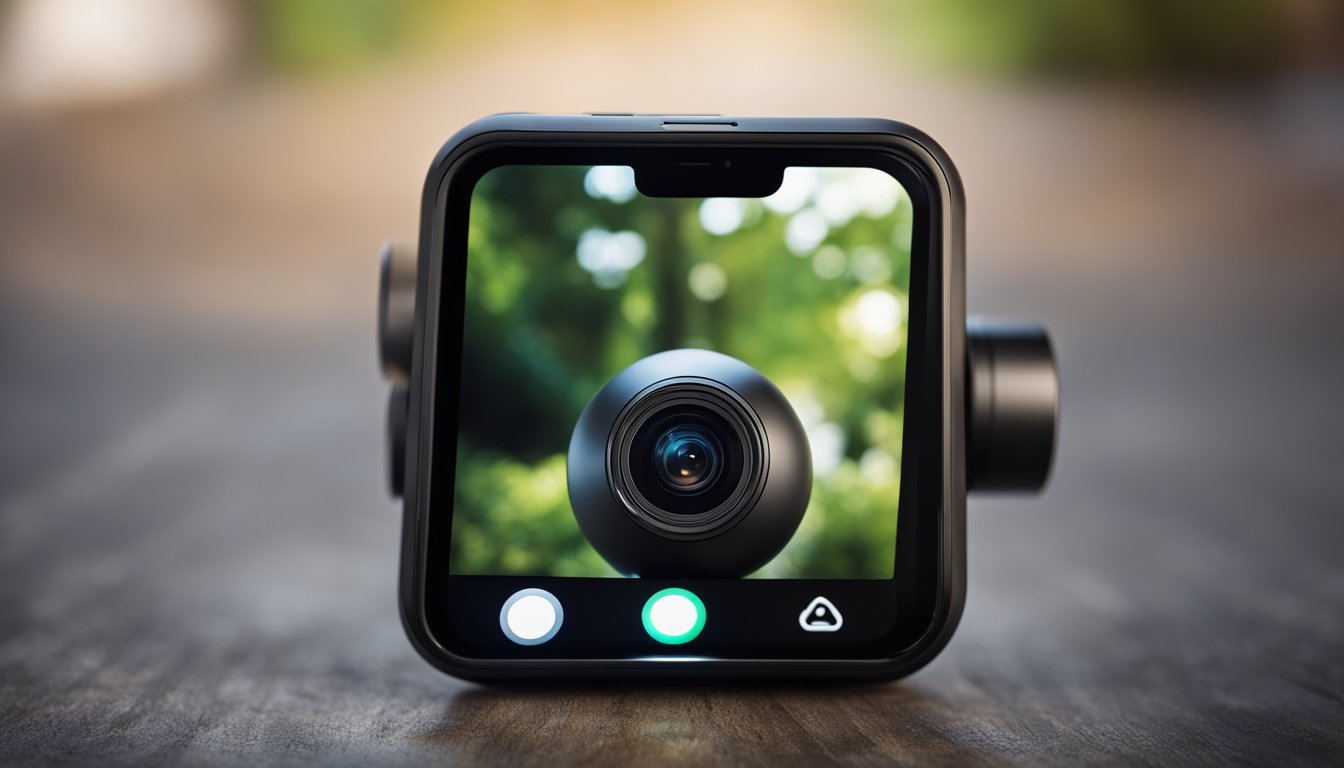
When it comes to selecting a 360 camera for your iPhone, durability and design play crucial roles. You want a camera that can withstand various weather conditions and is convenient to carry without compromising on features like modularity that may enhance your shooting experience.
Weatherproofing
Many 360 cameras are designed with weather resistance in mind. For instance, some models offer waterproofing capabilities, allowing you to shoot in the rain or even underwater. The Insta360 X3 is noted for its high water resistance, with a robust build that can handle submersion, making it ideal for aquatic adventures.
Portability and Weight
Portability is key for a camera designed to be used with a mobile device. Most 360 cameras are smaller in size and light in weight, assuring ease of transport. For example, the Rylo 360 camera is notably lightweight at only 3.8 oz, which means it won’t add much weight to your gear.
Modular and Mountable Options
A modular design extends the functionality of your camera, as seen with devices like the Insta360 One RS, which can swap between a 360 cam and a 4K Boost action cam. Additionally, the ability to mount your camera is essential for capturing stable and versatile shots; many 360 cameras offer a range of mountable options for different scenarios.
Camera Features
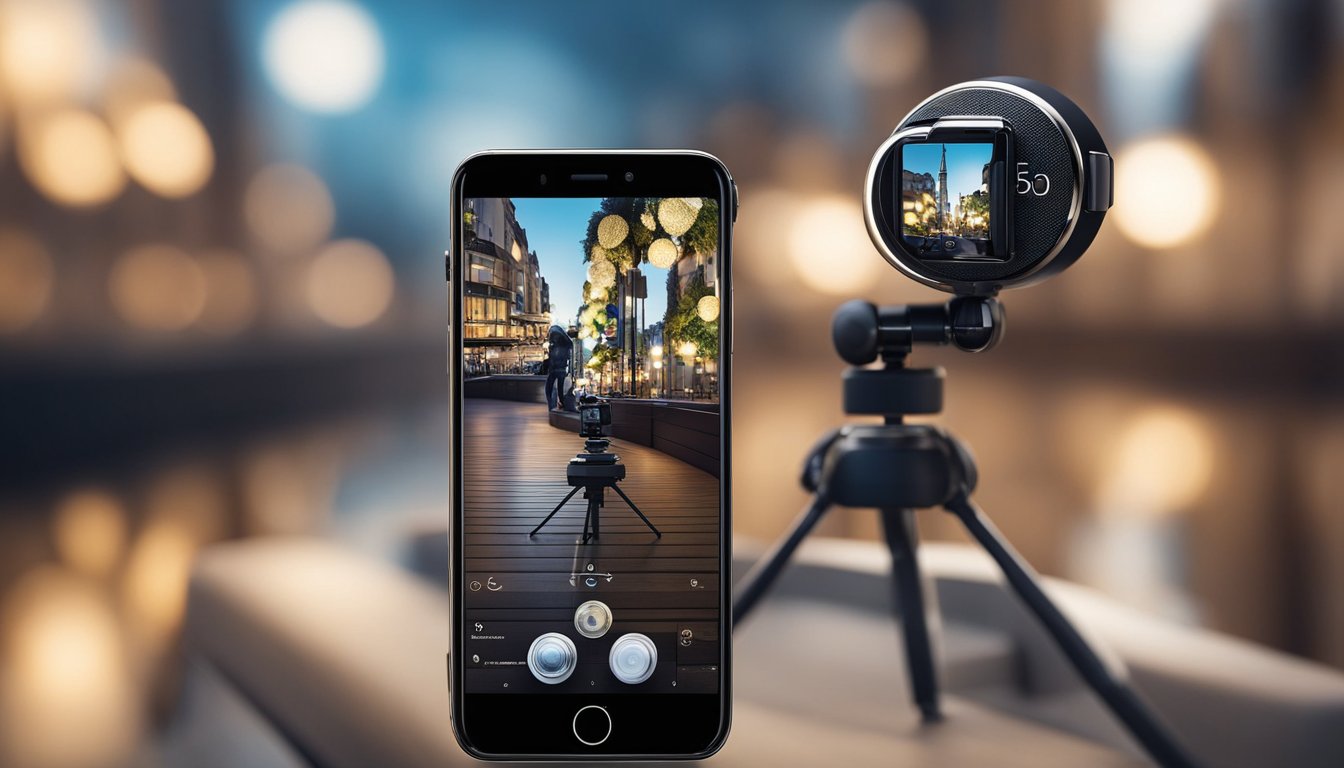
When you’re on the lookout for the best 360 cameras for your iPhone, certain features can greatly enhance your experience. Live streaming capabilities, stabilization with horizon leveling, and HDR for improved low-light performance are all features you should consider.
Live Streaming Capabilities
Your 360 camera should offer seamless live streaming. With cameras like the Insta360 Nano S, you can transform your iPhone into a powerful tool for live 360-degree broadcasts, ensuring you stay connected with your audience in real time.
Stabilization and Horizon Leveling
A gyroscope and accelerometer are key for motion stabilization, enabling hypersmooth stabilization and keeping your horizon level no matter how much action you’re capturing. This tech ensures every frame is as steady as the last, making for professional-looking footage straight from your pocket-size device.
HDR and Low-Light Performance
High Dynamic Range or HDR enhances the overall quality of your videos, especially in contrasting lighting conditions. Cameras equipped with this feature, like the Insta360 X3, can handle bright skies and dark shadows in a single shot, delivering a clear and balanced image even in low-light scenarios. Automatic stitching capabilities further simplify your post-shooting workflow, merging multiple images into a single, spherical panoramic shot.
Storage and Battery Life
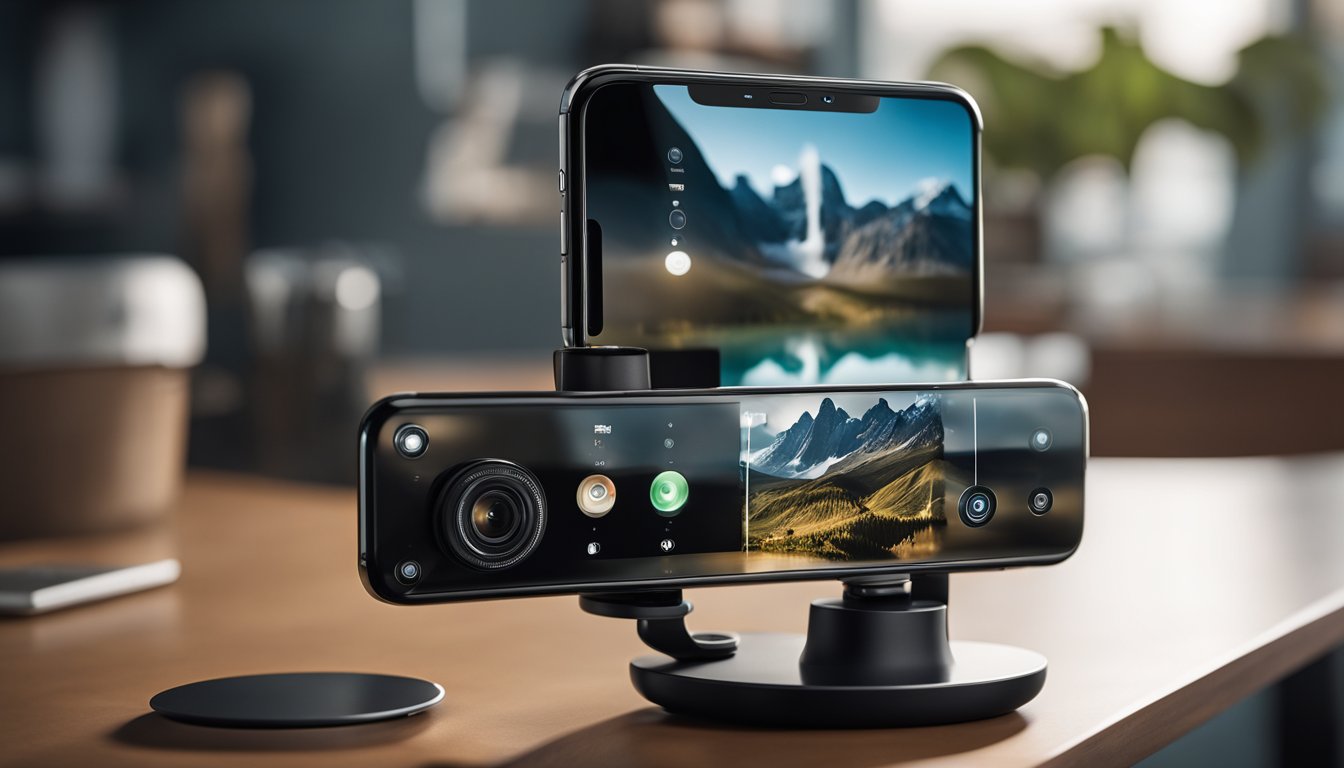
When choosing a 360 camera for your iPhone, consider the storage and battery life carefully—they define how long and how much you can capture before needing a break.
Most modern 360 cameras support microSD cards, allowing you to expand your storage significantly. Purchasing a high-capacity microSD card ensures you won’t miss a moment, even in stunning high resolution. Remember, higher resolution videos will fill up your storage faster, so larger cards, such as 64GB or above, are recommended.
As for battery life, it varies by model. Generally, expect anywhere from 1 to 3 hours of continuous shooting time. Some models offer the convenience of replaceable batteries, so you can carry extras and swap them out as needed. This can be a real lifesaver during long shooting days.
- Typical Camera Battery Life: 1-3 hours
- Recommended microSD Card: 64GB or higher
Always check if the camera’s battery is rechargeable via USB, which can be done through a power bank, giving you more flexibility while on the go.
It’s good practice to transfer files to your iPhone or cloud storage frequently to ensure you have backups and keep your camera’s storage available for new adventures.
Accessories and Extras
When capturing the world in 360 degrees with your iPhone, certain accessories can greatly enhance your experience. Specific tripods and mounts ensure stability, waterproof housing protects in challenging environments, and additional lenses and filters allow for creative shooting.
Tripods and Mounts
For capturing steady and sharp 360-degree content, a tripod is essential. Look for tripods with adjustable legs that can grip various surfaces or ones with magnetic bases for quick mounting on metal surfaces. Mounts with built-in GPS functionality can even tag your location data directly to your photos and videos for an enhanced viewing experience later.
Waterproof Cases and Housing
If you’re planning to shoot near water or in the rain, investing in a waterproof case ensures your iPhone and 360 camera attachment stay safe. Cases rated with IP68 are often safe for continuous submersion, allowing you to capture underwater scenes up to depths typically specified by the manufacturer.
Additional Lenses and Filters
Filters can help you capture the right mood or correct lighting issues when using your 360 camera. Consider purchasing polarizing filters to reduce glare or ND filters to manage exposure on bright days. Attachable lenses can also extend the capabilities of your 360 camera, allowing for zoom or macro shots that wouldn’t be possible with the camera alone.
Content Creation with 360 Cameras
Immerse yourself in the creative possibilities of 360 cameras for your iPhone. These innovative devices allow you to capture unique panoramic photos and videos, opening up a new realm of content creation. Whether it’s for personal memories or professional-quality virtual tours, the potential is vast and varied.
Photography and Video Production
With a 360 camera, you can capture everything around you in stunning detail. The Insta360 ONE, for example, allows you to record crisp 4K 360° video and take 24MP photos, elevating your content to a professional standard. Models like the GoPro Max make it easy to record and create immersive virtual tours or dynamic footage for various platforms.
Editing and Post-Production Tools
After capturing your footage, utilize advanced editing tools available on your iPhone to enhance and refine your content. Apps designed for 360 cameras often offer OverCapture, enabling you to frame your 360 video into a standard video from any angle. Employ these tools to highlight the best sections of your footage or to create a narrative flow in your content.
Sharing on Social Media and VR Platforms
Once your content is polished and ready, share it on social media platforms like Facebook or YouTube, where 360 videos can be interactively experienced by viewers. If you’re targeting virtual reality enthusiasts, platforms like Oculus allow you to distribute your content in a format specifically suited for VR devices, making it feel as though your audience is right there with you.
Budget and Pricing
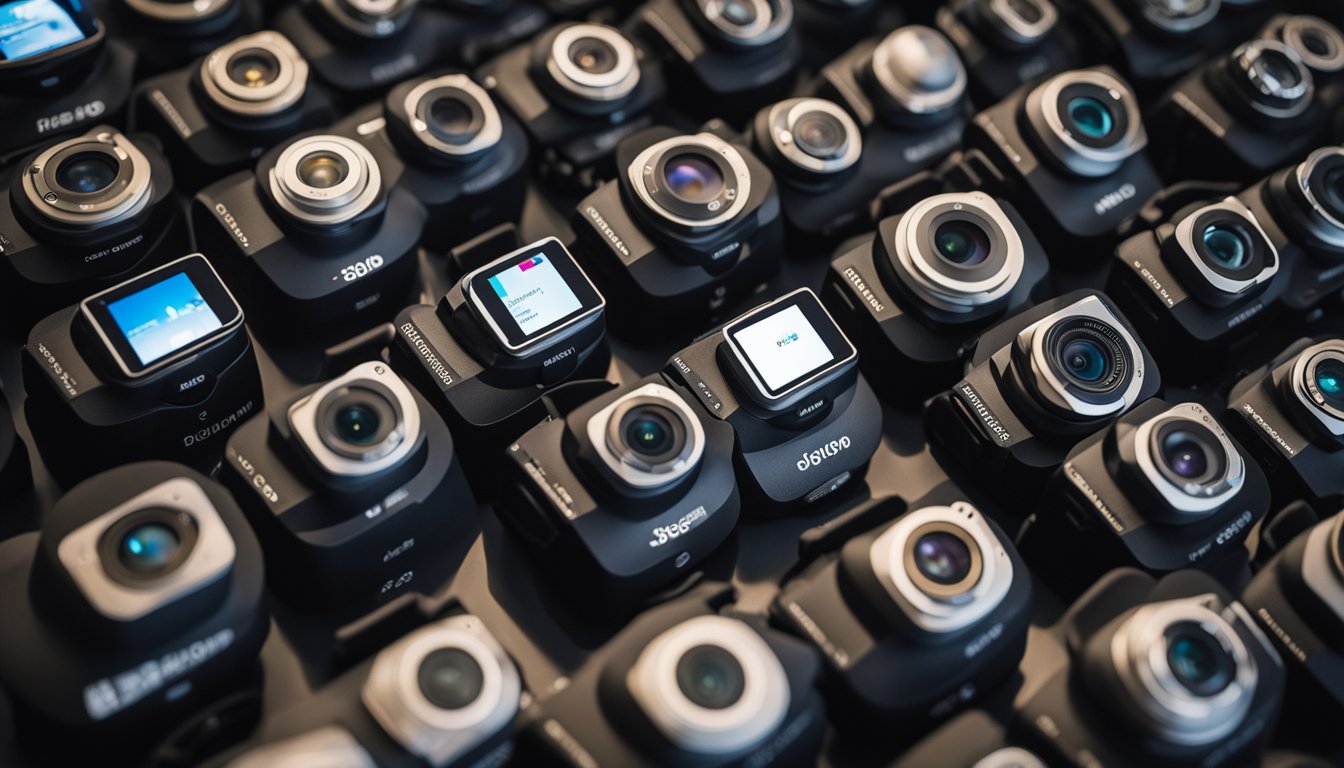
When you’re in the market for a 360 camera that pairs well with your iPhone, your budget is a key factor. Fortunately, there’s a range of options to match different price points.
For those of you who are cost-conscious, prices for a decent 360 camera can start as low as around $200. These affordable options are perfect if you’re dipping your toes into 360-degree photography without committing a large sum of money.
On the other hand, if you’re willing to invest more for enhanced features and better resolution, mid-range cameras typically cost between $300 and $500. It’s a sweet spot for a balance between cost and quality, offering you a robust set of functionalities at a reasonable price.
For the enthusiasts who demand the best performance and the highest quality, top pick cameras can cost upwards of $500. Although they’re pricier, they come with the bells and whistles: higher photo resolution, superior video quality, and additional features like advanced stabilization and low-light performance.
Here’s a quick breakdown by price range:
Budget-Friendly (Under $300)
- Basic features
- Good for beginners
Mid-Range ($300 – $500)
- Enhanced features
- Higher resolution
- Better for regular users
Premium (Above $500)
- Advanced features
- Best photo and video quality
- Ideal for professionals and enthusiasts
Remember that prices can fluctuate due to sales and promotions, so it pays to keep an eye out for deals. Also, consider that the best 360 camera for you is one that not only meets your budget but also suits your specific needs and usage scenarios.
Summing Up: Finding Your Ideal 360 Camera for iPhone
When you’re in the market for the best 360 cameras to pair with your iPhone, you’ll want to consider a few key points. First, photo quality is crucial. Look for a camera that offers high-resolution images to ensure your panoramic shots are clear and vibrant.
In terms of video resolution, you’ll want something that can produce stunning, smooth footage. A camera capable of shooting in at least 5.7K will give you impressive results, such as the Rylo 360 which offers commendable video quality under good lighting conditions.
For those of you who are professional users, features like time-lapse and picture-in-picture modes might be deal-breakers. It’s worth investing a bit more for advanced functionalities that will elevate your work.
On the other hand, if you’re looking for budget-friendly options, don’t fret; there are cameras that offer good quality without breaking the bank. Be mindful, though, that with a lower price point might come trade-offs in resolution or build quality.
Some 360 cameras also come with a subscription model giving you access to additional features or cloud storage. Weigh the long-term costs to decide if it’s the right fit for your needs.
Remember to check compatibility with your iPhone to ensure a seamless connection between your new camera and your smartphone. By keeping these considerations in mind, you’re well on your way to capturing the world in 360 degrees.
Frequently Asked Questions
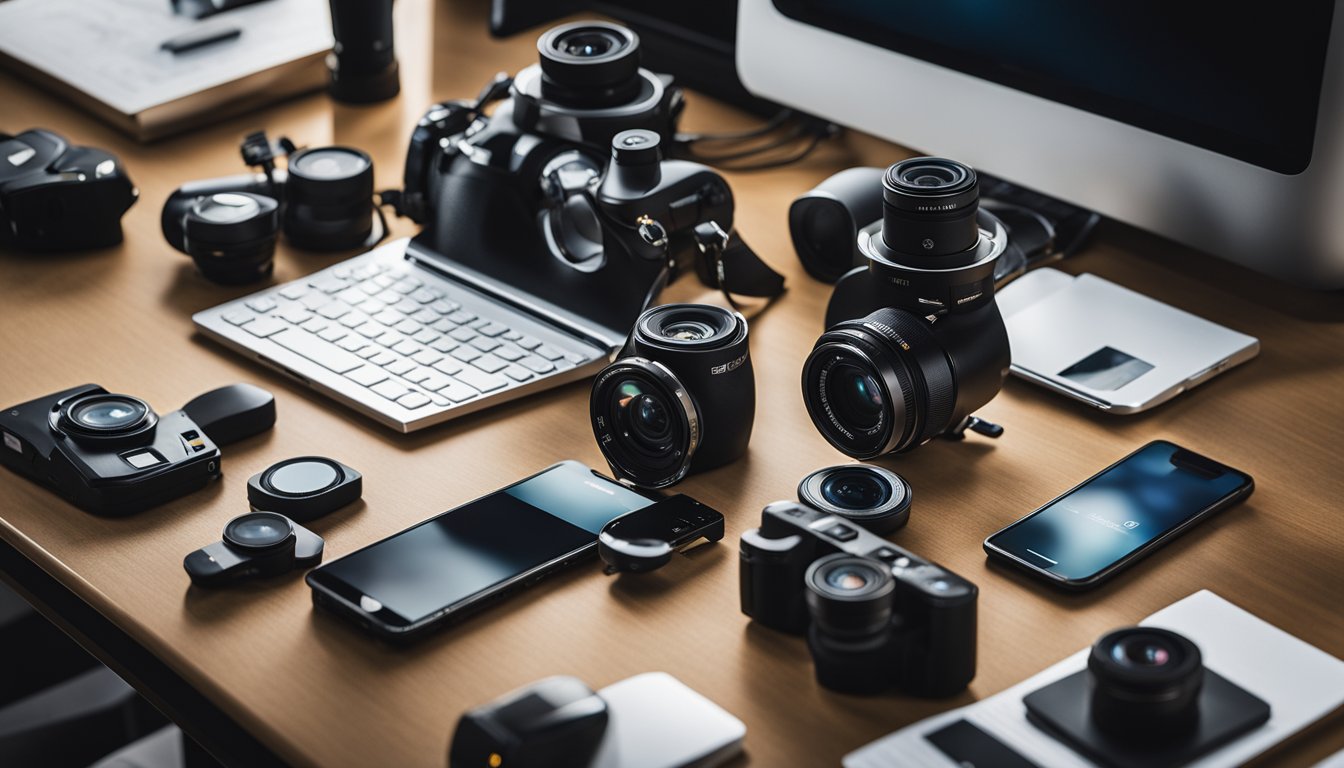
Before we dive into the specifics, here’s a quick overview of 360 cameras compatible with your iPhone. From the best 4K recording options to the range of prices you can expect, we’ve got your questions covered.
What are the top 360 camera options compatible with iPhones?
Your iPhone can pair seamlessly with cameras like the Insta360 Nano S, which is designed specifically to attach to your iPhone, enhancing its capabilities for 360-degree video and photography.
Which 360 cameras provide the best value for money in 2023?
For the best balance between cost and quality, the Rylo 360 camera is a notable contender, offering excellent video quality and features without breaking the bank.
Can you recommend a 360 camera that supports 4K video recording?
Certainly, the Rylo 360 camera not only offers a budget-friendly price but also supports impressive 5.8K video recording, which can be downsampled to 4K for sharp and vivid 360-degree content.
What are some popular 360 action cameras that work well with smartphones?
Action cameras like the GoPro MAX are designed to be rugged and offer dynamic 360-degree recording, which can be easily managed and edited through an accompanying smartphone app.
How does the Insta360 camera range perform with iPhones?
Insta360 cameras, such as the Insta360 X3, are renowned for their compatibility with iPhones, offering smooth integration and a variety of innovative features for creating immersive 360-degree content.
What are the price ranges for high-quality 360 cameras suitable for iPhones?
You can find high-quality 360 cameras for your iPhone starting from around $200 and going up to $500 or more for advanced features like higher resolution video and robust build quality for action recording.






